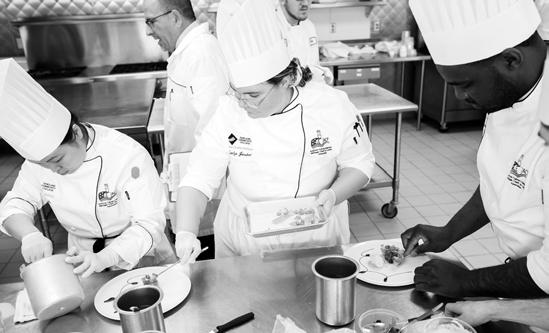

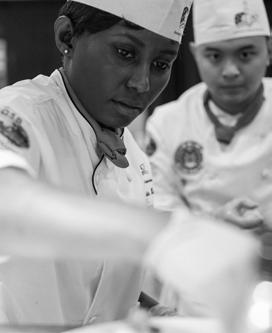
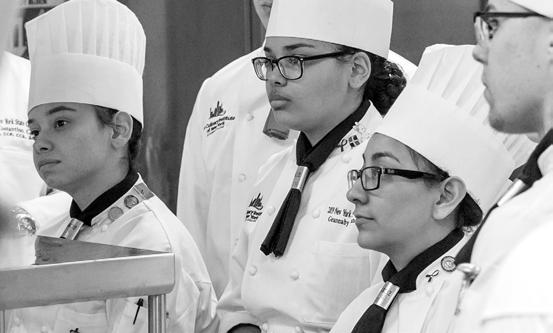

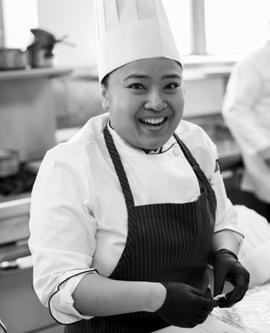
NOVEMBER/DECEMBER 2019 VOLUME 43, NUMBER 6 NATIONAL CULINARY
A NATIONAL PUBLICATION OF THE AMERICAN CULINARY FEDERATION THE ROAD TO IKA The history and future of ACF Culinary Team USA HIGH TECH FINE DINING SHAREABLE COCKTAILS PACK A FESTIVE PUNCH Dedicated To The Professional Chefs And Culinarians Of America
REVIEW


FEATURE STORY 26 The Road to Glory
Introducing the prestigious team of ACF chefs preparing to compete at IKA’s 2020 Culinary Olympics in Germany.
14
ACF Year in Review
A look back on ACF’s 90th anniversary year, and all the ways in which we’ve worked to improve this organization for our members.
DEPARTMENTS
18
20
22
24
Main Course
Health and wellness, global influences and more inspire new spice trends.
On the Side
Punch bowls offer the perfect platform for creative and shareable cocktails.
Pastry
A look at the top pastry trends for 2020.
Classical vs. Modern
Chef Hari Pulapaka, CEC, presents the classic French dish, coquilles St. Jacques, and a lightenedup, modern version. 34
Health
Chefs makeover classic recipes with whole grain and plant-based add-ins. 38 Management
Fine-dining restaurants embrace new technologies at the back and front of house.

42 ChefConnect 2020
The cover of this issue of NCR is inspired by the November 1964 issue of American Chef magazine, printed by the American Institute of Chefs (AIC). The following year, the AIC merged with the ACF after a 1963 proposal by then-ACF National President Willy Rossel, AAC, HOF.

WEARECHEFS .COM 3
IN EACH ISSUE 5 President’s Message 6 ACF On the Line 8 News Bites 12 Advocacy 44 The Quiz 46 A Look Back
SECTION
SPECIAL
Editor in Chief
Jocelyn Tolbert
Creative Services Manager
David Ristau
Assistant Editors
Heather Henderson and Amelia Levin
Graphic Designer
Armando Mitra
Sales Specialist
Tilman Gerald
Director of Marketing and Communications

Alan Sterling
American Culinary Federation, Inc.
180 Center Place Way St. Augustine, FL 32095 (800) 624-9458 (904) 824-4468 Fax: (904) 940-0741 ncr@acfchefs.net • www.acfchefs.org
Board of Directors
President
Stafford DeCambra, CEC®, CCE®, CCA®, AAC®
Immediate Past President
Thomas Macrina, CEC, CCA, AAC
National Secretary
Mark Wright, CEC, AAC
National Treasurer
James Taylor, CEC, AAC, MBA
American Academy of Chefs Chair
Americo “Rico” DiFronzo, CEC, CCA, AAC
Vice President Central Region
Steven Jilleba, CMC®, CCE, AAC
Vice President Northeast Region
Barry R. Young, CEC, CCE, AAC
Vice President Southeast Region
Kimberly Brock Brown, CEPC®, CCA, AAC
Vice President Western Region
Robert W. Phillips, CEC, CCA, AAC
Executive Director
Heidi Cramb
The National Culinary Review® (ISSN 0747-7716), November/December
2019, Volume 43, Number 6, is owned by the American Culinary Federation, Inc. (ACF) and is produced 6 times a year by ACF, located at 180 Center Place Way, St. Augustine, FL 32095. A digital subscription to the National Culinary Review® is included with ACF membership dues; print subscriptions are available to ACF members for $25 per year, domestic; nonmember subscriptions are $40. Material from the National Culinary Review®, in whole or in part, may not be reproduced without written permission. All views and opinions expressed in the National Culinary Review® are those of the author and do not necessarily reflect the views and opinions of the officers or members of ACF. Changes of mailing address should be sent to ACF’s national office: 180 Center Place Way, St. Augustine, FL 32095; (800) 624-9458; Fax (904) 940-0741.
The National Culinary Review® is mailed and periodical postage is paid at St. Augustine, Fla., and additional post offices.
POSTMASTER: Send address changes to the National Culinary Review®, 180 Center Place Way, St. Augustine, FL 32095.
Strategic Plan for the Future of the ACF
The ACF is not a massive, for-profit company and thus the national office staff is charged to work effectively, efficiently and in accordance with our strategic plan.
The plan, adopted in 2018, reflects the priorities of the ACF for the next five years, designed to be a roadmap for the staff and current and future boards to assure relevance, growth and success for our members. Our principles — those of professionalism, leadership, collaboration and excellence — will continue to guide us in everything we do as we continue to make progress in the years to come.
Priority number one of the strategic plan is to amplify the ACF’s voice. It is no secret that the most cost-effective way to broaden and engage an audience is via social media. With a growing community of over 150,000 followers, we can safely say that the culinary community is interested in the American Culinary Federation’s chefs.
Priority number two: convert “followers” into members. In our strategic plan, there is a direct call to recruit student culinarians. (Coincidentally, young chefs are the fastest growing group on ACF’s social media.)
This summer, we introduced the ACF Student Membership program and in 30 days, more than 500 students have come on board. We believe these students are the new foundation of the ACF and we are working hard to provide them value, in certification, events and with professional development opportunities.
Those professional development opportunities align with another key strategic priority — the new Online Learning Center. The OLC allows culinarians to maintain their certifications, gain CEHs, access the all-new apprenticeship portal and learn from event presenters with Conference On-Demand.
While many of our strategic goals are currently on target, one priority will be taking off in 2020: a renewed focus on property memberships. Hotels, country clubs and resorts are home to many talented chefs and ACF members — especially those that are certified — provide exceptional value to these properties.
On social media, when chefs engage with us, they like what they see. But a “like” on Facebook doesn’t translate into a new member — not without face-to-face engagement. That’s where you fit into the strategic plan.

Do you have a contact at a hotel? A colleague at a resort? How about a food and beverage manager at the local country club? Introduce them to the ACF. Their companies can benefit from our new programs and offerings in so many ways — and our community will be better for it, too.
I wish you the best for this holiday season and look forward to seeing everyone in 2020.
From my ohana to yours,
Stafford T. DeCambra, CEC, CCE, CCA, AAC National President American Culinary Federation
Contact

4 NCR | NOVEMBER/DECEMBER 2019 | President's Message | Un Mensaje Del Presidente |
me at sdecambra@acfchefs.net or follow me on Facebook @stafforddecambra and Instagram @sdecambra
Plan estratégico para el futuro de ACF
ACF no es una empresa masiva con fines de lucro y, por lo tanto, el personal de la sede nacional tiene la obligación de trabajar de manera efectiva, eficiente y de acuerdo con nuestro plan estratégico.
El plan, que se adoptó en 2018, refleja las prioridades de ACF para los próximos cinco años, y está diseñado a la manera de una hoja de ruta para el personal y las juntas actuales y futuras para garantizar la relevancia, el crecimiento y el éxito de nuestros miembros. Nuestros principios, los de profesionalismo, liderazgo, colaboración y excelencia, continuarán guiándonos en todo lo que hagamos a medida que avancemos en los próximos años.
La prioridad número uno del plan estratégico consiste en extender la llegada de ACF. No es ningún secreto que la forma más rentable de ampliar nuestro alcance y atraer a un público es a través de las redes sociales. Con una creciente comunidad de más de 150.000 seguidores, podemos decir con seguridad que la comunidad culinaria está interesada en los chefs de la American Culinary Federation.
La segunda prioridad: convertir a nuestros "seguidores" en miembros. Nuestro plan estratégico incluye una convocatoria directa para reclutar estudiantes culinarios. (Casualmente, los jóvenes chefs son el grupo de más rápido crecimiento en las redes sociales de ACF).
Este verano presentamos el programa de Membresía Estudiantil de ACF, y en 30 días se han incorporado más de 500 estudiantes. Creemos que estos estudiantes son la nueva base de ACF y estamos trabajando arduamente para ofrecerles valor en materia de certificación, eventos y oportunidades de desarrollo profesional.
Esas oportunidades de desarrollo profesional se suman a otra prioridad estratégica clave: el nuevo Centro de Aprendizaje en Línea. El Centro de Aprendizaje en Línea permite a los culinarios mantener sus certificaciones, acceder a oportunidades de educación continua así como también al nuevo portal de aprendizaje y aprender de los presentadores de eventos con Conference On-Demand.
Si bien estamos al día con muchos de nuestros objetivos estratégicos, adoptaremos una nueva prioridad a partir de 2020: un enfoque renovado en las membresías de propiedades. Los hoteles, clubes de campo y resorts albergan a muchos chefs talentosos y miembros de ACF, especialmente aquellos que están certificados, que aportan un valor excepcional a estas propiedades.
En las redes sociales, cuando los chefs interactúan con nosotros, les gusta lo que ven. Pero un "me gusta" en Facebook no se traduce en un nuevo miembro, no sin un compromiso cara a cara. Ahí es donde entra usted en el plan estratégico.
¿Tiene un contacto en un hotel? ¿Conoce a un colega en un resort? ¿Tal vez a un gerente de alimentos y bebidas en el club de campo local? Cuénteles sobre ACF. Sus empresas podrán aprovechar nuestros nuevos programas y ofertas de muchas maneras, y nuestra comunidad también cosechará los beneficios de una colaboración.
Les deseo lo mejor para estas fiestas y espero verlos a todos en 2020.
WEARECHEFS .COM 5
USPS® Statement of Ownership, Management and Circulation Publication Title: The National Culinary Review® Publication Number: 0747-7716 Filing Date: November, 2019 Issue Frequency: Bi-monthly Number of Issues Published Annually: 6 Annual Subscription Price: $35/$20 subscriber/member domestic, $85 international Complete Mailing Address of Known Office of Publication: American Culinary Federation, Inc., 180 Center Place Way, St. Augustine, FL 32095-8859 Contact Person: Jocelyn Tolbert, Editor in Chief Telephone: (904) 484-0213 Complete Mailing Address of Headquarters or General Business Office of Publisher: American Culinary Federation, Inc., 180 Center Place Way, St. Augustine, FL 32095-8859 Publisher: Renee Brust, Director of Marketing and Communications, American Culinary Federation, Inc., 180 Center Place Way, St. Augustine, FL 32095-8859 Editor: Jocelyn Tolbert, Editor in Chief, American Culinary Federation, Inc., 180 Center Place Way, St. Augustine, FL 32095-8859 Managing Editor: Jocelyn Tolbert, Editor in Chief, American Culinary Federation, Inc., 180 Center Place Way, St. Augustine, FL 32095-8859 Owner: Full Name: American Culinary Federation, Inc. Owner: Complete Mailing Address: 180 Center Place Way, St. Augustine, FL 32095-8859 Known Bondholders, Mortgages, and Other Security Holders Owning or Holding 1 Percent or More of Total Amount of Bonds, Mortgages, or Other Securities: None Tax Status: The purpose, function, and nonprofit status of this organization and the exempt status for federal income tax purposes: Has Not Changed During Preceding 12 Months Publication Title: The National Culinary Review Issue Date for Circulation Data Below: Nov. 2018 to Oct. 2019 Extent and Nature of Circulation: Educational Culinary Publication for Members and Subscribers 15. Extent and Nature of Circulation Average No. Copies Each Issue During Preceding 12 Months a. Total Number of Copies: 3,358 b1. Mailed Outside-County Paid Subscriptions: 2,897 b2. Mailed In-County Paid Subscriptions: 16 b3. Paid Distribution Outside the Mails Including Sales Through Dealers and Carriers, Street Vendors, Counter Sales, and Other Paid Distribution Outside USPS®: 0 b4. Paid Distribution by Other Classes of Mail Through the USPS: 0 c. Total Paid Distribution: 2,913 d1. Free or Nominal Rate Outside-County Copies: 0 d2. Free or Nominal Rate In-County Copies: 0 d3. Free or Nominal Rate Copies Mailed at Other Classes Through the USPS: 0 d4. Free or Nominal Rate Distribution Outside the Mail: 104 e. Total Free or Nominal Rate Distribution: 104 f. Total Distribution: 3017 g. Copies Not Distributed: 10 h. Total: 3,027 i. Percent Paid: 96.6% 15. Extent and Nature of Circulation No. Copies of Single Issue Published Nearest to Filing Date a. Total Number of Copies: 3,377 b1. Mailed Outside-County Paid Subscriptions: 2,809 b2. Mailed In-County Paid Subscriptions: 16 b3. Paid Distribution Outside the Mails Including Sales Through Dealers and Carriers, Street Vendors, Counter Sales, and Other Paid Distribution Outside USPS®: 0 b4. Paid Distribution by Other Classes of Mail Through the USPS: 0 c. Total Paid Distribution: 2825 d1. Free or Nominal Rate Outside-County Copies: 0 d2. Free or Nominal Rate In-County Copies: 0 d3. Free or Nominal Rate Copies Mailed at Other Classes Through the USPS: 0 d4. Free or Nominal Rate Distribution Outside the Mail: 110 e. Total Free or Nominal Rate Distribution: 110 f. Total Distribution: 2935 g. Copies Not Distributed: 10 h. Total: 2945 i. Percent Paid: 96.3% 16. Electronic Copy Circulation Average No. Copies Each Issue During Preceding 12 Months a. Paid Electronic Copies: 13,426 b. Total Paid Print Copies + Paid Electronic Copies: 16,339 c. Total Print Distribution + Paid Electronic Copies: 16,443 d. Percent Paid: 99.4% 16. Electronic Copy Circulation No. Copies of Single Issue Published Nearest to Filing Date a. Paid Electronic Copies: 13,248 b. Total Paid Print Copies + Paid Electronic Copies: 16,073 c. Total Print Distribution + Paid Electronic Copies: 16,183 d. Percent Paid: 99.3% I certify that 50% of all my distributed copies are paid above a nominal price. I certify that all information furnished on this form is true and complete. I understand that anyone who furnishes false or misleading information on this form or who omits material or information requested on the form may be subject to criminal sanctions (including fines and imprisonment) and/or civil sanctions (including civil penalties). Renee Brust, Director of Marketing and Communications American Culinary Federation, Inc. October 30, 2019
What’s Cooking on We Are Chefs this month
Read these recent digital-only articles (and new stuff each week!) on wearechefs.com.




















Flavor Up Your Cocktail Menu with These Five Techniques

Try these ideas for infusing flavor and heat into your liquid lineup.
Escoffier’s Classic Peach
Melba Gets a Dramatic Modern Remake
Three baking and pastry students assisted their professor Jaime Schick, CEPC in re-creating the classic dessert — though they skipped the swan sculpture for the slightly less theatrical wine glass.
The Katsu Sando is Taking the World by Storm
The popular, porky staple sold street-side in Japan and at convenience stores (konbini), is making its way to domestic menus.
The ACF’s Top Ten Recipes of All Time
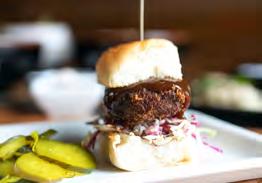
In case you need something with a professional’s touch upvotes of thousands of cooks who came before you.



























Sure, digital is environmentally friendly... but paper smells better.


A digital subscription to NCR is included with ACF membership, but members can now get a one-year print subscription for just $25! Visit acfchefs.org/ncr to get yours today.
Follow the ACF on your favorite social media platforms:




@acfchefs
@acfchefs


@acf_chefs
@acfchefs American Culinary Federation
Twitter question of the month:















What was your biggest success — or fail! — in a culinary competition?
Tweet us your answer using the hashtag #ACFasks and we’ll retweet our favorites.
Our favorite #acfchefs Instagram photo of the

month:
The Culinary Insider, the ACF’s bi-weekly newsletter, is a great source of timely information about events, certification, member discounts, the newest blog posts, competitions, contests and much more. Sign up at acfchefs.org/tci

6 NCR | NOVEMBER/DECEMBER 2019 | On the Line |
Tag your Instagram photos with #acfchefs and you could see your image here in the next issue of NCR.
OUR DIFFERENCE
Fresh, Quality Milk

Made from fresh, local milk gathered only a few hours after milking, BelGioioso Fresh Mozzarella, Burrata and Stracciatella begin with quality ingredients and care. The result is a delicate, clean-flavored Fresh Mozzarella with a soft texture and porcelain white appearance – the finest available on the market today. Try our new Stracciatella








Available in waterpack tubs and cups, thermoform logs and balls, and slicing loaf.













belgioioso.com
BelGioioso Burrata filled with Stracciatella
BelGioioso Fresh Mozzarella
rBST Free* | Gluten Free | Vegetarian *No significant difference has been found in milk from cows treated with artificial hormones.
BelGioioso Stracciatella Tomato Appetizer
“The Heart of Burrata”
We’ve got a HUNCH
High school students United with NASA to Create Hardware (HUNCH) began 16 years ago with three schools producing hardware training items for the International Space Station (ISS). Since then, HUNCH has grown to more than 200 schools in 38 states. In addition to producing space flight hardware for the ISS and crew training, HUNCH reaches students through projects like sewing flight and training articles, and competing in video and culinary challenges.
That’s where we come in. The ACF has partnered with NASA and HUNCH to help get more students involved in the annual culinary challenge, which has high school students learn about food science and processing to create a recipe for astronauts aboard the ISS. (Traditional recipes don’t always work in space — food must be shelfstable, very flavorful, not too crumbly… there’s a lot that goes into it.)

Thirty-seven schools participated in the 2019 HUNCH Culinary Challenge. Ten were chosen to compete at NASA’s Johnson Space Center Food Lab in April in hopes of being named as the 2019 winner. Phoebus High School of Hampton, Virginia, won with their organic harvest hash with butternut squash entrée.


Welcome Students
Already, more than 300 secondary and post-secondary students in ACFEF-accredited programs have become members of the ACF through our new student membership initiatives. University of Arkansas - Pulaski Technical College was one of the first programs to sign up its students.
"Being a part of the ACF has opened many doors to experiences I wouldn't have had otherwise and keeps me motivated in my work. Between ACF conferences and competitions, I've had the
Master Plan
Thinking of taking the Certified Master Chef exam? 2020 is just around the corner! Those who are interested in testing are invited to go through the pre-approval process ASAP in order to be eligible to register for upcoming exams. Visit acfchefs.org/download/ documents/certify/CMC_Exam_Application.pdf to get started.
While the deadline to join the 2020 challenge has now passed, secondary students and educators can start thinking about what they might create for the 2021 event, which begins accepting applications next August.
Follow the 2020 HUNCH Culinary Challenge with us throughout the year and learn more about the program at nasahunch.com.
opportunity to travel to different parts of the country and learn from many chefs I admire,” Jan Lewandowski, CEPC, baking instructor at Pulaski Tech, when asked why he thought it was important for his students to be part of the ACF. “You definitely get what you put into it and that is a lesson I always share with my students.”
Visit acfchefs.org/students to get more details on the new programs and enroll your students today.
| News Bites | 8 NCR | NOVEMBER/DECEMBER 2019
What’s Hot?
Since 2007, the National Restaurant Association (NRA) has surveyed ACF chefs for their insights on the coming year’s culinary trends. The results are revealed in the NRA’s annual What’s Hot Culinary Forecast.
For the 2019 report, 650 chefs gave the organization their thoughts and 77 percent identified cannabis/CBD-infused drinks as the No. 1 trend. Cannabis/CBD-infused food was cited as the second most popular trend. Third was zero-waste cooking. What will be the hottest food trends of 2020? That’s up to you. Keep an eye on your email inbox in mid-November to add your voice to the industry-leading report.
Supply and Demand
In 2019, ACF introduced Conference On Demand in response to chefs and industry professionals’ need for a more exciting and convenient way to earn their Continuing Education Hours (CEHs). Dynamic, inspiring and educational presentations from industry chefs — on topics like “Surviving and Finding Fresh Inspiration” with Eduardo Garcia, “The Art and Craft of Charcuterie” with Brian Polcyn, CEC, and Michael Ruhlman — make it easy and fun to stay current on your certification and further your professional development.
Purchase a 2019 Conference Package between now and December 31, 2019 and get unlimited access to our entire catalog of 2019 videos until the end of the year for only $299. Visit acfchefs.org/events to learn more.
Stepping Stone
In summer 2019, the ACFEF introduced a new option for secondary students, workforce development programs and anyone without enough hands-on experience to be recognized (yet) for their culinary knowledge: the ACFEF Certificate of Culinary Essentials. It’s a small stepping stone towards ACF certification — and a great end-ofyear exam for instructors to implement so their students can earn a certificate to put on job and college applications.
The certificate demonstrates a student’s proficiency in industrystandard competencies and aligns with ACF’s Certified Fundamental Cook (CFC®) certification. Upon successfully passing the Certificate of Culinary Essentials exam, the student is eligible to attempt the ACF Certified Fundamental Cook® written and practical exams.
Once it is verified that the candidate has completed the required education, they can take the online written exam and earn their certificate immediately. To get started visit acfchefs.org/ACF/ Education/ProDev/ACFEFCertificate.
Salut
On Sunday, August 18, ACF Tampa Bay Chapter held its second annual An Evening with ACF Tampa Bay Chefs at Fort Harrison Hotel. Ten local ACF chefs and 10 stations raised $6,000 for local student scholarships and the Ryan Wells Foundation.


Andy Coniglio, corporate executive chef for Welbilt, received ACF Tampa Bay’s Chef of the Year award at an awards ceremony held in the Fort Harrison Hotel, Clearwater, Florida on September 9.
Gilles Renusson, a professor with the Grand Rapids Community College (GRCC) Secchia Institute for Culinary Education, received the Chevalier du Merite Agricole, an award bestowed by the French minister of agriculture on citizens for outstanding services to agriculture. Guillaume Lacroix, general consul of France in Chicago, presented the award in a private ceremony at GRCC in September.
Lake Lawn Resort in Delavan, WI announced in late August that John Billings, CEC will take over as executive chef. Billings will oversee all culinary operations at the 270-acre lakeside resort and conference center.

In August, Mark Painter, CEC, was the subject of an article in the University of Colorado, Colorado Springs’ (UCCS) publication "Communique," after taking over as residential chef at UCCS’s Roaring Fork Dining Hall.

We tip our toques to ACF chefs and chapters who have recently won an award, accepted a new position, taken part in charity work or achieved another notable accomplishment. If you believe your name should be listed in the next issue of Salut, please send an email to pr@acfchefs.net.

WEARECHEFS .COM 9
There’s an App(rentice) For That
Did you know that November 11-17 is National Apprenticeship Week? Here are five reasons you should start an ACFEF apprenticeship program in your kitchen:
• Increase staff retention as apprentices become committed and loyal employees
• L earn while teaching by recalling and demonstrating culinary techniques
• Satisfaction of mentorship to see apprentice graduate and embark on a successful culinary career
• Develop connection between industry and educational institutes to meet the growing needs of the culinary industry
• Grow chapter membership through apprenticeship
Visit our Facebook and Youtube pages right now to see videos of real apprentices and program coordinators talking about what ACFEF Apprenticeship has done for them. facebook.com/acfchefs.
Read This!
JGV: A Life in 12 Recipes

Jean-Georges Vongerichten looks back with humor and heart in a memoir that chronicles successes and failures. The legendary chef shares stories of cooking with legendary chefs Paul Bocuse and Louis Outhier, traveling in search of new and revelatory flavors, and building menus of his own around the world.
Jean-Georges Vongerichten, Michael Ruhlman • W. W. Norton & Company, October 2019
The Ultimate Companion to Meat
A beautiful and comprehensive companion to various cuts of meat from

Field Day
The Assabet Valley High School Culinary Program junior class from Marlborough, Massachusetts visited the Union Oyster House in Boston for a field trip on September 16, 2019. The historic restaurant’s executive chef, Rico DiFronzo CEC, CCA, AAC, chair of the American Academy of Chefs, gave the students a tour of the restaurant. Retired chef Anton Christen did a demo on opening oysters and clams. The students had clam chowder and fish and chips for lunch and received a Union Oyster House Cookbook.

Corrections
In the September/October issue story "Creative Couvertures," we incorrectly labeled male pastry chef Kriss Harvey as "her." In addition, Harvey uses exclusively Valrhona, not Callebault, chocolate as was incorrectly stated in the article. NCR regrets the errors.
every animal you can think of by the butcher behind the renowned store Victor Churchill. “The Ultimate Companion to Meat” is filled with technical photographs, international meat charts, recipes, photographs and more.
Anthony Puharich, Libby Travers • The Countryman Press, October 2019
The Pacific Northwest Cookbook
This book shows that you can cook delicious, fresh seafood no matter where you live in the United States. Naomi Tomky guides the reader through her reliable,
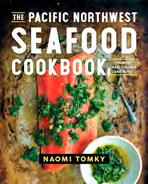
fool-proof recipes with engaging, fun prose, demystifying the greater picture of sustainability.
Naomi Tomky • The Countryman Press, November 2019
My Korea: Traditional Flavors, Modern Recipes
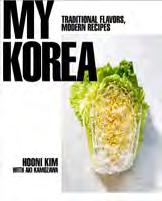
From simple rice cakes drenched in a spicy sauce to a 12-hour Korean Ramyeon, Hooni Kim draws from his background in world-class French and Japanese kitchens to fine-tune the techniques in classic Korean cuisine.
Hooni Kim • W. W. Norton & Company, April 2020
10 NCR | NOVEMBER/DECEMBER 2019 | News Bites |
share generously. eat naturally. live deliciously.






When you choose Prosciutto di San Daniele PDO, Grana Padano PDO and Prosciutto di Parma PDO, you show a passion for the Italian way of life that includes incomparably delicious, natural food that’s never mass-produced or processed. Each of these products carries the Protected Designation of Origin seal, the European Union’s guarantee of quality and authenticity, so you know they are from a speci c geographical region in Italy and are created using traditional techniques that have set the standard of culinary excellence for generations. Learn more about these icons of European taste at iconsofeuropeantaste.eu

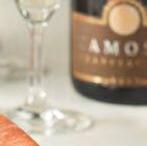



THE EUROPEAN UNION SUPPORTS CAMPAIGNS THAT PROMOTE HIGH QUALITY AGRICULTURAL PRODUCTS.













































































CAMPAIGN FINANCED WITH AID FROM THE EUROPEAN UNION.
The content of this promotion campaign represents the views of the author only and is his/her sole responsibility. The European Commission and the Consumers, Health, Agriculture and Food Executive Agency (CHAFEA) do not accept any responsibility for any use that may be made of the information it contains.
In the late 1800s and early 1900s, when Southern Italian immigrants were arriving by the millions to the United States, “eating Italian food was ... considered ‘slumming,’” Tracie McMillan wrote in a 2016 article on nationalgeographic.com.
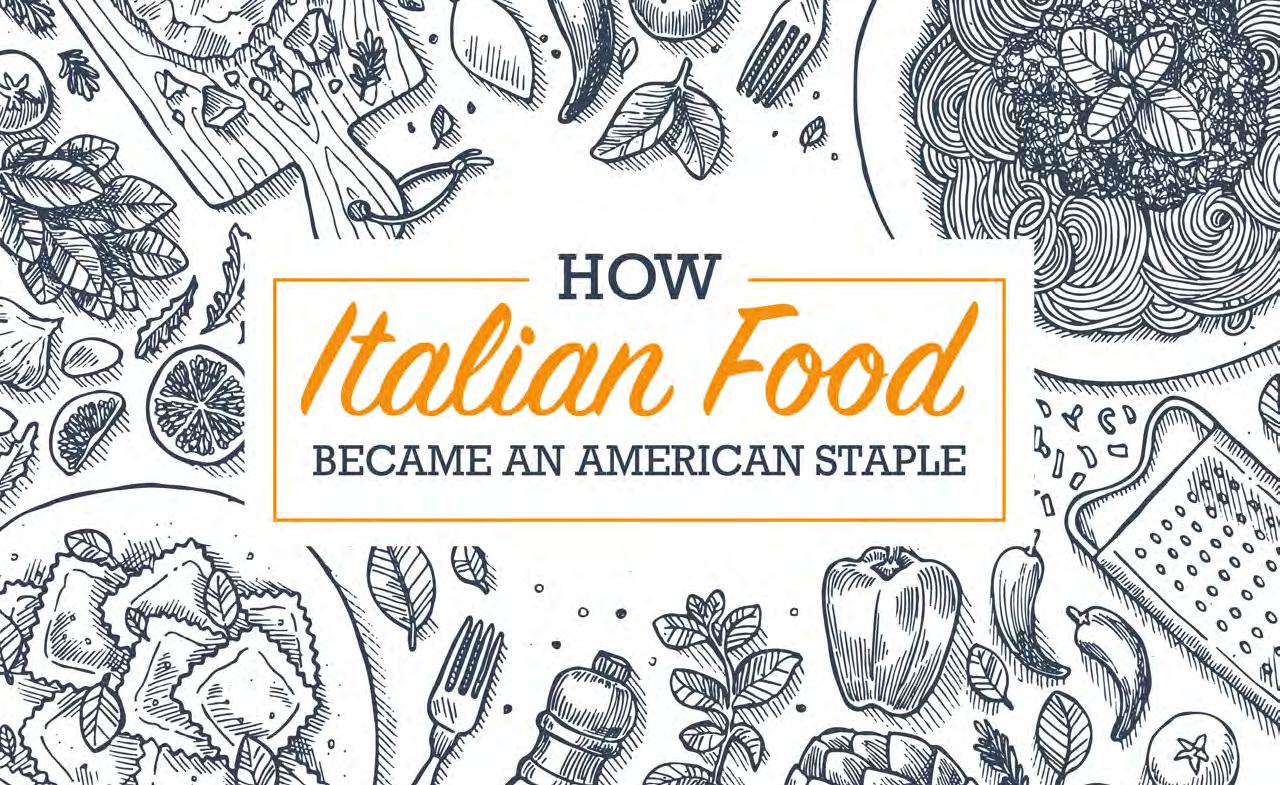
It is an astonishing thought, especially given that the most popular “ethnic” cuisine in the United States today is Italian food. Newly-minted citizens from northern Italy quickly converted their fellow Americans to fans of red sauces, pasta and pizzas, and interpretations soon sprouted an astonishing variety of toppings, all of them heavily influenced by the blending of peoples, cultures and geography.
After all, no one would argue that New York pizza is the same as Chicago pizza, which is radically different from the pizza served on the West Coast. Cultures blend even within our own borders.
Of course, decades on, the idea of Italian food as being “less than” is patently ridiculous, with acclaimed chefs riffing on a region-by-region dissection of the dishes of Italy. In fact, a 2015 study by the National Restaurant Association found that 87% of Americans eat Italian food at least a few times a year and dry pasta, like white rice or flour, is a staple of every pantry.
As we have fallen ever more in love with foods from other cultures, it is critical that we don’t overlook the obvious. The baleadas of Honduras, the fava beans of Ethiopian ful , the black risottos of Croatia didn’t magically come from some where They came from someone .
Right now, there is someone waiting to come to our country, maybe someone in need of a new home, a new life, an opportunity. Our hope here at the ACF is that we all can celebrate what we love about food — the diversity, the joy of it and the way it brings us all together — and welcome not only the food itself but also the people that prepare it.
After all, is the food you cook separate from you?
It is not. It is a part of you and the next time you enjoy “ethnic” food, remind yourself that this amazing food didn’t randomly land on your plate. Someone brought it here, to you, and often, that someone is sitting right next to you.
In 2020, NCR will explore these connections and the peoples that have brought them to our tables, including the cuisine of the Balkan, North Asian, East African and Latin American regions.
12 NCR | NOVEMBER/DECEMBER 2019
We now know more than ever about where our food comes from. Perhaps the next question we should ask is who it comes from.
gather joyfully. eat soulfully. live deliciously.










When you choose Prosciutto di San Daniele PDO, Grana Padano PDO and Prosciutto di Parma PDO, you show a passion for the Italian way of life that includes incomparably delicious, natural food that’s never mass-produced or processed. Each of these products carries the Protected Designation of Origin seal, the European Union’s guarantee of quality and authenticity, so you know they are from a speci c geographical region in Italy and are created using traditional techniques that have set the standard of culinary excellence for generations.

Learn more about these icons of European taste at iconsofeuropeantaste.eu





















































The content of this promotion campaign represents the views of the author only and is his/her sole responsibility. The European Commission and the Consumers, Health, Agriculture and Food Executive Agency (CHAFEA) do not accept any responsibility for any use that may be made of the information it contains.












CAMPAIGN
THE EUROPEAN UNION SUPPORTS CAMPAIGNS THAT PROMOTE HIGH QUALITY AGRICULTURAL PRODUCTS.
FINANCED WITH AID FROM THE EUROPEAN UNION.
Let’s take a look back on 2019, ACF’s 90th anniversary, and all the ways in which we’ve worked to improve this organization for our members this year — and to make sure the world hears our message, too.
YEAR IN REVIEW
We held our first-ever Women Leaders Symposium, sparking important conversations about real, challenging issues faced by women and people of color in the hospitality industry.
More than 1,150 new certifications were awarded to chefs and culinary students
We gave out 81 awards at ACF National Convention
1 new Certified Master Chef
Over 500 new student members were added in the first month of the new Student Membership programs
The ACFEF accredited 22 new secondary and post-secondary programs
28 new members and honorary members were inducted into the American Academy of Chefs
Print NCR subscriptions have increased by 71%
Our social media following has increased more than 64%
More than 1,300 chefs (including more than 100 firsttimers) attended ACF National Convention: Orlando (the best attendance in a decade!)
The Professional Culinarian membership category has grown by 3% in the last two years
We added 2,506 brand-new members to ACF in the first nine months of 2019
3 new chapters — ACF Northwest Arkansas, ACF Korea and ACF Jamaica — were chartered at Convention, and 2 more — ACF Ecuador and ACF Mid Florida East Coast — have formed and are on their way to chartered status in 2020
10 new ACFEF Apprenticeship programs were launched
WEARECHEFS .COM 15
WE ALSO LAUNCHED
The launch of the ACF Online Learning Center (OLC), featuring online classes, quizzes and practice written certification exams
Moving the ACFEF Apprenticeship Program’s instructional materials and skill evaluation tools online to a mobile-friendly Apprenticeship Portal, part of the OLC
A relaunch of our sister site We Are Chefs, which now houses the ACF blog, select and expanded NCR articles and Sizzle, our digital home for culinary students
16 NCR | NOVEMBER/DECEMBER 2019
tons of new initiatives and updated some of our members’ favorite benefits, including...
WAIT, THERE'S MORE!
Our new Student Membership Programs, under which ACFEF-Accredited post-secondary programs can provide their culinary students membership in the ACF for a reduced rate of only $50 per student, and ACFEF-accredited secondary programs can provide membership to students for free
ACF’s Advanced Professional Cooking Classes, an ongoing series of professional development courses in partnership with American Master Chefs Order to help professionals with the intention of preparing for the Certified Master Chef® Exam improve their practical cooking knowledge and skill set
The ACFEF Certificate of Culinary Essentials, which demonstrates a student’s proficiency in industrystandard competencies and aligns with ACF’s Certified Fundamental Cook certification
A complete redesign of the National Culinary Review, as well as lowering the print subscription price for members and non-members alike
A new format for ACF Regional and National Competitions, making the process more transparent, accessible, affordable and fair for all competitors
ACF Conference On Demand, during which you can watch recordings of selected sessions from ACF events to gain industry knowledge and earn CEHs online
WEARECHEFS .COM 17
SPICE IS NICE
By Jody Shee
A few seismic shifts in consumer preferences will push spices further to the forefront in 2020: healthier lifestyles, the rise of global food trends and plant-forward dishes.
No doubt, consumers have developed a taste for bolder flavors and more heavily spiced foods. According to Mintel’s International Food Trends report from January, 44.1 percent of surveyed consumers said they prefer foods cooked with lots of spices in 2018 compared to 38.5 percent in 2010. These flavors have come more into focus because in recent years thanks to changing consumer preferences.
The wellness factor
Spices fit squarely in the center of the growing trend toward functional foods. College students and Gen Zers are looking for foods to meet their personal nutrition interests, and that also have bold, authentic flavors, says Joe Labombarda (pictured opposite top), corporate executive chef for Chartwells Higher Education Dining Services, a division of Compass Group North America, in Rye Brook, N.Y.
To meet the growing demand for flavorful, functional foods, earlier this
year Chartwells introduced a Fueling Your Unique Lifestyle menu with dishes targeting specific health benefits like immunity, heart-health, healthy skin, sustained energy and recovery, and spices play a key role. The Clean Eats Chicken Shrimp & Quinoa Jambalaya contains cayenne and cumin; the Healthy Skin poached salmon with curried quinoa and mango salad contains turmeric, and the Recovery fried turnip and kimchi contains ginger and gochugaru , a chili pepper powder. Pickles, rich with cloves, bay leaf, mustard seed, peppercorn and ginger, also fit squarely in the recovery platform, touted for their muscle crampreducing properties. “For 2020, we will continue to celebrate turmeric and za’atar, and will start recipe development with spirulina, activated charcoal and sumac,” Labombarda says.
Going global
The growing popularity of global cuisines is also shaping current and
Opposite top left: Harissa Glazed Spanish Octopus; courtesy of McCormick & Co. Inc.
Opposite: Promoting healthy skin, Chartwellsmanaged colleges and universities have the option to serve Turmeric Poached Salmon with Curried Quinoa & Mango Salad; courtesy of Chartwells Higher Education Dining Services
18 NCR | NOVEMBER/DECEMBER 2019 | Main Course |
Changing consumer preferences and global influences are bringing bolder flavors to the table
future spice trends. Gary Patterson (pictured center), director of culinary for spice company McCormick & Co. Inc., in Hunt Valley, Md., highlights four global cuisines as the biggest drivers of trending spices and seasonings: African, Japanese, Middle Eastern and Indian.

From Africa, Ethiopia’s popular berbere seasoning combines an assortment of spices, from paprika to allspice, coriander, cardamom, ginger and red pepper, Patterson says. He also points out South Africa’s emerging peri-peri seasoning, based on the fiery heat of the peri-peri pepper. North Africa’s stillemerging harissa has untapped potential. He suggests mixing it with yogurt for a dip or combining it with roasted bell peppers and oil to make a sauce.
To make the most of emerging Japanese flavors, Patterson suggests experimenting with Japanese seven spice (red pepper, nori flakes, ginger, orange peel, Sichuan pepper and white and black sesame seeds) — a blend commonly found in ramen. Japanese noodle bowls also frequently incorporate gomasio, a dry condiment of unhulled sesame seeds and salt. Dried furikake seasoning gives dishes a boost of umami, thanks to its blend of seaweed, sesame, dried fish, sugar and salt.


From the Middle East comes shawarma, a street food favorite that incorporates such spices as cumin, coriander and cinnamon. Schug is an authentic, mildly spicy sauce or condiment containing cumin, cardamom, coriander, Thai bird chilies and garlic. Baharat is another traditional
Eastern Mediterranean seasoning that features black pepper, cumin, cardamom, cloves, coriander, nutmeg and paprika, according to Patterson.
Indian cuisine has steadily risen in popularity in the U.S. Chaat masala is one versatile spice mix gaining in popularity, he says, adding that its most notable ingredient is dried green mango powder, or amchoor. It also includes black salt, cumin, coriander, ginger and garlic.
And, “given the elevation of authentic Indian cuisine, I expect to see less generic yellow curry powder and more housemade curry with traditional spices, such as cinnamon, cumin and coriander,” says David Kamen (pictured bottom), assistant director of consulting for The Culinary Institute of America, Hyde Park, N.Y.
Plants forward
Besides the unique spice-filled flavors global cuisines offer, these popular regions also stand out for their plantbased dishes, which also showcase unique flavors and spices.


“It doesn’t matter what animal is used for the dish,” Kamen says, “it’s about the flavor that the spice blends create.”
Case-in-point: many Spanish, Italian, Portuguese and Latin American meat and non-meat dishes use sofrito, a blend of cooked peppers, tomatoes, onions and garlic, as the base for building flavors.
Spices are well-positioned for future menu development as consumers and culinary pros alike favor these plantbased options as well as better-for-you fare and global flavors.
WEARECHEFS .COM 19
Photo credits: Photo of David Kamen by Phil Mansfield
Jody Shee, a Kauai, Hawaii-based freelance writer and editor, previously was editor of a foodservice magazine. She has more than 20 years of foodwriting experience and writes the blog www.sheefood.com.
THE PUNCH BOWL
Historically, shareable cocktails were a seamless way to provide thirst-quenching refreshment to the masses. Punch bowls, the beverage of choice for church functions, public house events, weddings and funerals, became part of the national lexicon dating back to the beginning of the 19th century.
According to Derrick Mancini, owner, manager and distiller at Quincy Street Distillery, “grog,” a combination of rum and water, was the historical antecedent for punch. By the late 19th century, the elixir evolved to include tea, spice, sugar and fruit juice (usually citrus) — and that marked the official birth of the drink.
While fans of supersized cocktails are probably familiar with the Scorpion Bowl, which dates back to the 1930s, today’s shareable drinks go beyond rum, fruit and crushed ice. Since then, punch bowls have experienced a sort of renaissance with inspired ingredients ranging from cinnamon tea and shrub to Champagne and cognac.
In light of these intoxicating options, one thing is clear (even from inside a crystallized vessel or copper vase), shareable cocktails are no longer the sticky sweet, neon-pink, liquid confection of yesteryear. Instead, punch has taken on a
America’s innovative mixologists redefine shareable cocktails
By Amy Paturel
sophisticated air, and Americans’ love of the stuff shows no signs of letting up — especially when it comes to holiday cheer.
From Farm to Punch Bowl
The farm-to-table movement has made its way behind the bar, and shareable cocktails are an ideal way to showcase this. From farm-fresh fruits and teas to seasonal herbs and spices, the potential ingredient list for shareables is seemingly limitless.
Inspired by traditional holiday choices with a nod to 19th century punches, Mancini crafts a unique Christmas punch incorporating up to a dozen fruit juices, including a range of citrus- and Caribbean fruit-based ones like pineapple and pomegranate that are seasonal around the holidays. He then adds some sort of tea (white, green or black), sugar, water, ice and the distillery’s signature white whiskey, Water Tower White Lightning™. “Last year we went through a dozen three-gallon bowls during the course of one evening,” he says.
The beauty of shareable cocktails is the creative platform they offer using a wide variety of ingredients. The Dorsey at the Venetian Resort in Las Vegas features a variety of punch bowls ranging from an easy-drinking punch with vodka, green apple juice, cucumber juice and lime to a Creole style punch with dark rum, allspice, lime, pineapple and bitters. And there’s always a seasonal punch, too. Lead Bartender Juyoung Kang aims for ingredients that complement the holidays, like pear, apple, cinnamon and nutmeg, rather than the usual suspects such as eggnog, pine and gingerbread.
Still, according to Patrick Williams, national beverage director at Punch Bowl Social, it’s not that easy to pull off well-made, shareable cocktails. “From conception to completion, the key is to decide on a base and then focus on balancing sweet and not sweet.”
For the holidays, Williams uses warming ingredients, such as cider, spice, bourbon and scotch. He begins with concentrated flavors that embody what he wants to accomplish with the punch and then selects a weak element like tea to stretch out the drink. The popular base formula goes something like this: one ounce of sour, two ounces of sweet, three ounces of strong and four ounces of weak.
20 NCR | NOVEMBER/DECEMBER 2019 | On the Side |
“That’s just a baseline,” says Williams, who prefers to play with the ratios depending on his base ingredients. “Bitters, spices, shrub, those things don’t scale like other ingredients, so you have to start with a single and taste as you go.” The goal, of course, is to mix the perfect ratio of sour, sweet, strong, weak and spice.
Serving Up Shareables
Crafty bartenders can make shareable cocktails especially novel, even whimsical or over the top, by playing around with serving vessels. The most Instagramworthy of the bunch come in vessels that aren’t designed for sipping. Believe it or not, some mixologists are serving up their large-batch libations in repurposed coffee equipment, fish tanks and cooking pots.
“People want to showcase the best parts of their lives, and big, beautiful shared cocktails look great on Instagram stories,” says Kang, who frequently relies on Absolut Elyx’s copper vessels and glassware to create a sleek, sexy shareable. “They have pineapples, flamingos, disco balls, roosters and more. They’re decadent and lavish but not intimidating.”
Mancini chooses a more conservative approach with pressed glass punch bowls reminiscent of traditional serving vessels. The designs harken back to 19th century cut glass crystal, so it’s a perfect match for his holiday shareables.


Whatever the vessel, mixologists have to pay attention to dilution. “Instead of using a big ice mold in the center of the bowl, which makes ladling a challenge, I’ll make four or five small ice molds for more even dilution,” says Williams. To really make a splash, consider the occasion and freeze ingredients that make sense. For the holidays, Williams froze marshmallows in the mold along with a sprig of rosemary to harken back to pine trees for their “Oh Tannebaum” libation.
No matter how you sip it — in a large, shared vessel or ladled into individual glasses — today’s punch is gaining ground
even in white tablecloth restaurants. These classy shareables are not only tasty and refreshing, but when mixed tableside, they give groups the opportunity to weigh in on strength and sweetness.
And what about the cost? Punchstyle drinks don’t necessarily come cheap. Depending on the size of the party, sharables can run anywhere from $50 to $400. The discrepancy, of course, depends on what’s in your bowl. In some cases, there’s an entire bottle of champagne or rum in one shared vessel. The payoff, of course, is a shared experience. “That’s why punch is so successful between our four walls,” says Williams. “It brings people together.”
WEARECHEFS .COM 21
Check out recipes for Creole-style punch from The Dorsey and 19th Century punch from Derrick Mancini on wearechefs.com.
Photo credits: Amber Boutwell, Punch Bowl Social
Amy Paturel, M.S., M.P.H., lives in Murrieta, California, where she writes about food, health and wellness.
PASTRY PREDICTIONS FOR 2020
Forecasting the future of desserts
By Michael Costa
Looking ahead to 2020, the prospect of uncertain times is leading diners to seek refuge in nostalgia and simplicity on dessert menus. That’s just one trend identified by our panel of pastry pros, who serve a spectrum of guests across various operations, including resorts, country clubs, freestanding restaurants and cruise ships. Here’s a deeper dive into some of those prominent trends impacting the pastry profession next year.
Nostalgic Noshes
Faithful renditions of timeless desserts like fruit tarts, apple pie, molten cake, pâte à choux (éclairs, cream puffs, profiteroles), strawberry shortcake, carrot cake, bread pudding, key lime pie, skillet cookies and more will make up the top trends of 2020, according to our experts.

“Dessert nostalgia is a byproduct of people’s stress due to what’s happening in the world and their lives, so they retreat to what’s familiar because it’s comforting,” says Adam Thomas, executive pastry chef at The Broadmoor in Colorado Springs, Colo. “It’s up to us to perfect those desserts as they were originally intended, unmanipulated, so we can give our guests the truest versions of those classics they crave.”
Customers also want recognizable dishes in 2020, and not a chef’s interpretation or deconstruction of a classic. “Presentationwise, we’ll see fewer garnishes on the plate and more focus on the main item. says Natasha Capper, CEPC, executive pastry chef at Piedmont Driving Club in Atlanta. “In the past, we’d have multiple components, but nobody wants to guess what’s on their plate right now.”
Asian Accents
Pastry chefs will highlight Asian flavors in 2020, using ingredients like matcha, miso, yuzu, ramen seasoning, black sesame, red beans, Okinawan black sugar and more,

incorporating them into the familiar framework of cakes, ice cream, gelato, covered cherries, macarons, chocolate bars and table breads.
“Matcha is everywhere — I joke there’s matcha fever going around,” says Daniel Godoy, fleet executive pastry chef for Holland America Line’s cruise ships. “Matcha adds a unique flavor and color to recognizable desserts. For example, we’ve created a popular green velvet cake, which is a matcha version of red velvet cake, and we flavor the frosting with yuzu concentrate.”
Dory Fung, a consulting pastry chef for several notable restaurants in Houston and a pastry instructor at Houston Community College, created a hit focaccia for a restaurant incorporating ramen seasoning and sesame oil into the dough. “A lot of people recognize and anticipate Asian flavors today, so we can experiment a bit,” she says.
Vibrant Colors
Social media has influenced the way food is prepared and presented around the globe, and in the world of pastry, that could even lead to an increase in vibrant colors via food coloring.
“It’s crazy to see food coloring trending in dessert because a few years ago everybody avoided it,” says Fung. “Today though, everybody wants those neon colors for Instagram. However, too much food coloring can make a dessert taste chalky and bitter.”
The same focus on color is trending in weddings for 2020, according to Yohan Lee, executive pastry chef at the Nassau, Bahamas-based Grand Hyatt Baha Mar, which hosts about 200 weddings a year.
“Wedding parties lately are looking for very bright Pantone colors on their
22 NCR | NOVEMBER/DECEMBER 2019 | Pastry |
Left, from top: Natasha Capper's Callebault chocolate Timbale; Matcha Cake with Yuzu Cremaux Lychees and Passion Fruit by Daniel Godoy Opposite, from top left: Strawberry chocolate eggs by Adam Thomas; Yohan Lee's Avocado Gazpacho with Mini Epi
cakes and desserts, and they want those photogenic pops of color to personalize their wedding experience,” says Lee, adding that the most popular wedding cake requests for 2020 have been ombre cakes with graduated colors of either coral, violet or blue.

Frozen Future
Several of the pastry chefs we interviewed say ice cream and gelato rank as the most popular items on their menus, and they say soft-serve ice cream in particular will be the next frozen treat trend for 2020.
“We’re seeing places that don't normally produce ice cream, gelato or soft serve ramp up their production, and that’s in line with the overall trend of simplicity and nostalgia for 2020,” says Thomas.
Taste of Technology
Edible and 3D printers are expected to be more affordable in 2020, so more pastry chefs can take advantage of technology to create custom molds, cookie cutters, edible logos, and photos — like selfies seen on top of lattes or bubble teas — and apply them to desserts.

An edible printer uses sugar sheets as paper and food coloring as ink to replicate images created on a computer, which can then be transferred to items. When a printed selfie is placed on top of a latte, for example, the sugar dissolves, leaving the “ink” picture floating on top.
“We no longer pipe ‘Happy Birthday’ or ‘Happy Anniversary’ in chocolate on celebration cakes; instead, we use our
edible printer for a special message, and place it on a hard chocolate back,” says Thomas. “The result is a much cleaner but still edible presentation.”
A food-specific 3D printer, which differs from a regular 3D printer and one that uses non-edible materials like plastic, is another trending option for pastry chefs in 2020. Ingredients like chocolate, dough or sugar can be printed into custom designs. “The ingredients must be mashed, liquified or processed to fit inside the machine,” Fung says. “After that, you can print some pretty cool shapes, like a lifesized hollow chocolate banana.”
Specialty Diets
Our experts predict that dairy-free milks, such as oat, cashew and coconut milk, will become more popular in 2020, as well as natural sweeteners like monk fruit or locally harvested honey, as consumers look for lower-sugar, veganfriendly desserts.
“Many in our industry view specialty diets in 2020 as a challenge instead of a headache,” says Thomas. “We want to figure out how to make desserts that are gluten-free, sugar-free and dairy-free without sacrificing taste or texture.”

WEARECHEFS .COM 23
Michael Costa is the former editorial director of Hotel F&B magazine, and has covered the food and beverage industry for more than a decade.
Classical
The name “coquilles St. Jacques” literally means “shells of St. James” in French, surely the most elegant way of saying “scallops.” In the U.S., the term refers to a dish of scallops, usually poached in white wine and placed atop a purée of mushrooms in a scallop shell that’s covered with a sauce made of the scallop poaching liquid, and then gratinéed under a broiler.
This rich appetizer isn’t as common on menus as it once was, though it is undeniably a French classic; two versions of it are included in Julia Child, HAAC, HHOF’s Mastering the Art of French Cooking , volume one. NCR asked Hari Pulapaka, CEC, to create two versions of coquilles St. Jacques as well.
“Before [I opened my restaurant] Cress, there was a ‘French-Vietnamese’ restaurant at our location. ... I recall seeing it on their menu,” Pulapaka says. “Having noted that, I’m sure chefs are using it as inspiration to create new dishes rooted in this classic.”
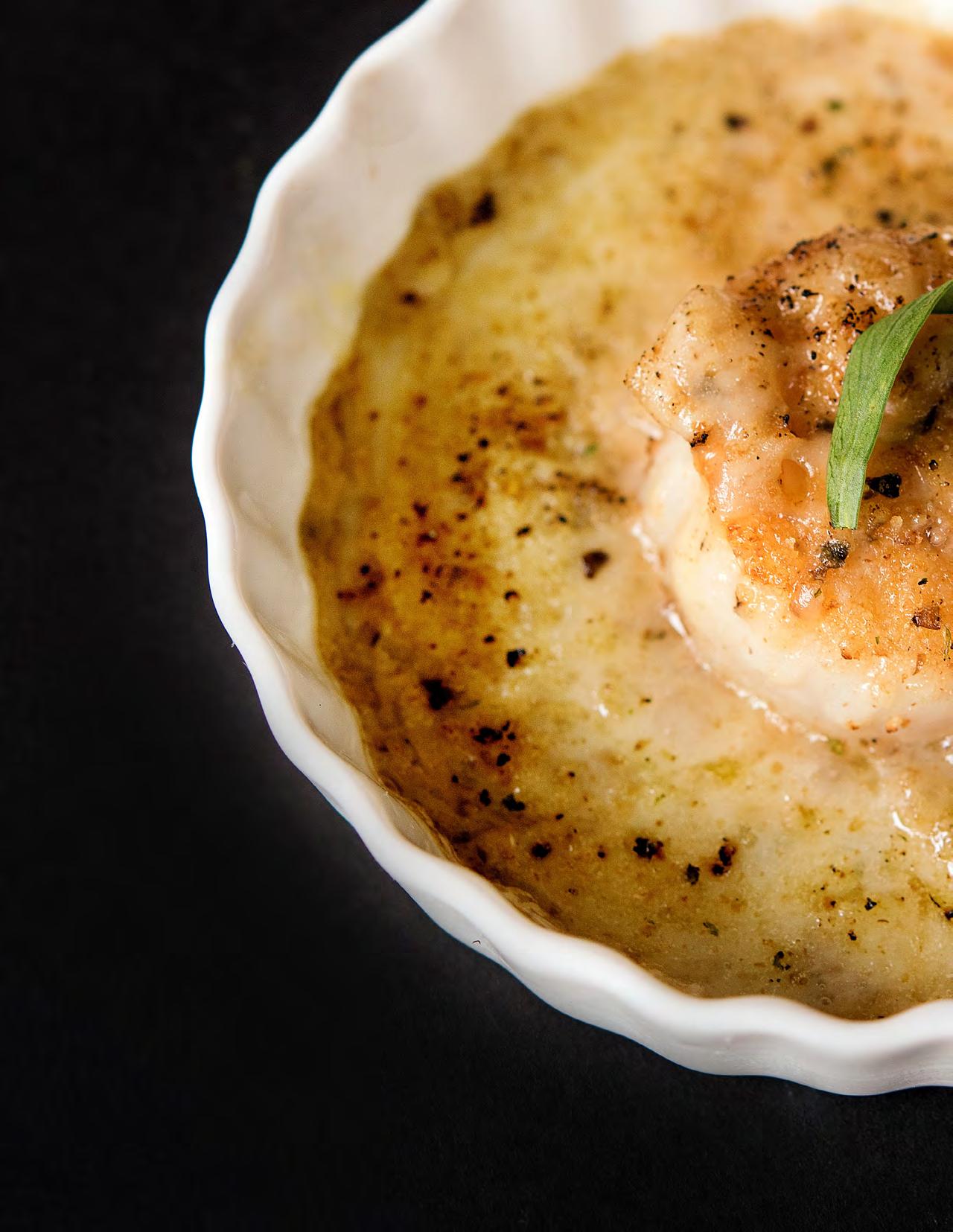
24 NCR | NOVEMBER/DECEMBER 2019 | Classical vs. Modern |
Modern
For a modern take, Pulapaka reworked the basic ingredients to create a more visually striking presentation. He puréed the scallop and butter mixture to a smooth consistency and served the seared and gratinéed scallops atop the purée. Artfully arranged pan-roasted mushrooms complete the plating.
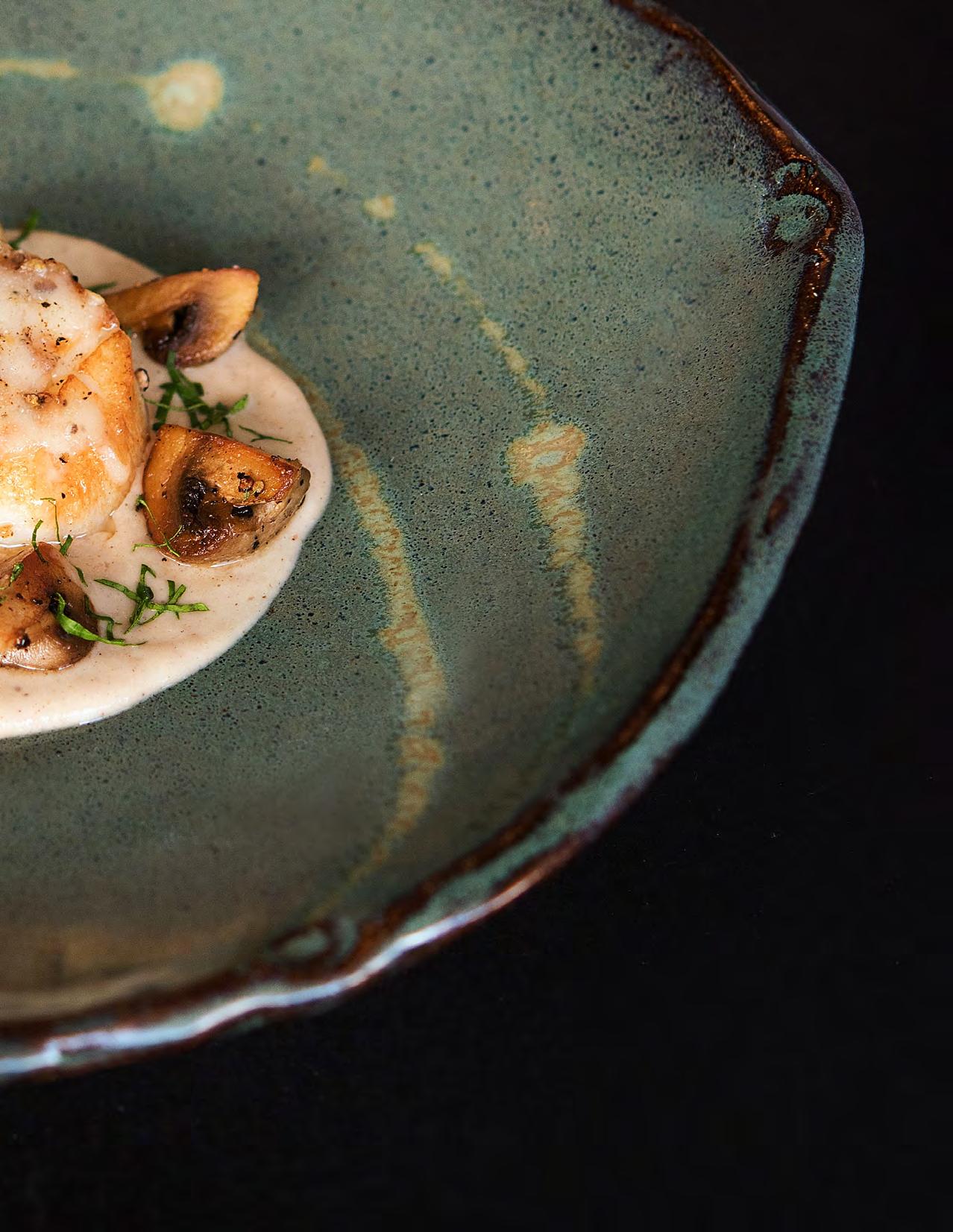
“I am often inspired by the classics in the food I create for Cress. Having never served that dish specifically at Cress, I became interested in thinking through a modern interpretation,” he says. “A traditional version can be heavy. So, I lightened it and infused more of the scallop flavor into the Béchamel. In fact, I used an often discarded part of the scallop, its abductor muscle, for a scallop mousseline as part of the Béchamel. This is in keeping with my commitment to reduce food waste in my kitchen. Full-use kitchens are by necessity more creative.”
See the classical and modern recipes, as well as more photos, at wearechefs.com.
WEARECHEFS .COM 25
Photos credit: Agnes Lopez



 By Amelia Levin
By Amelia Levin




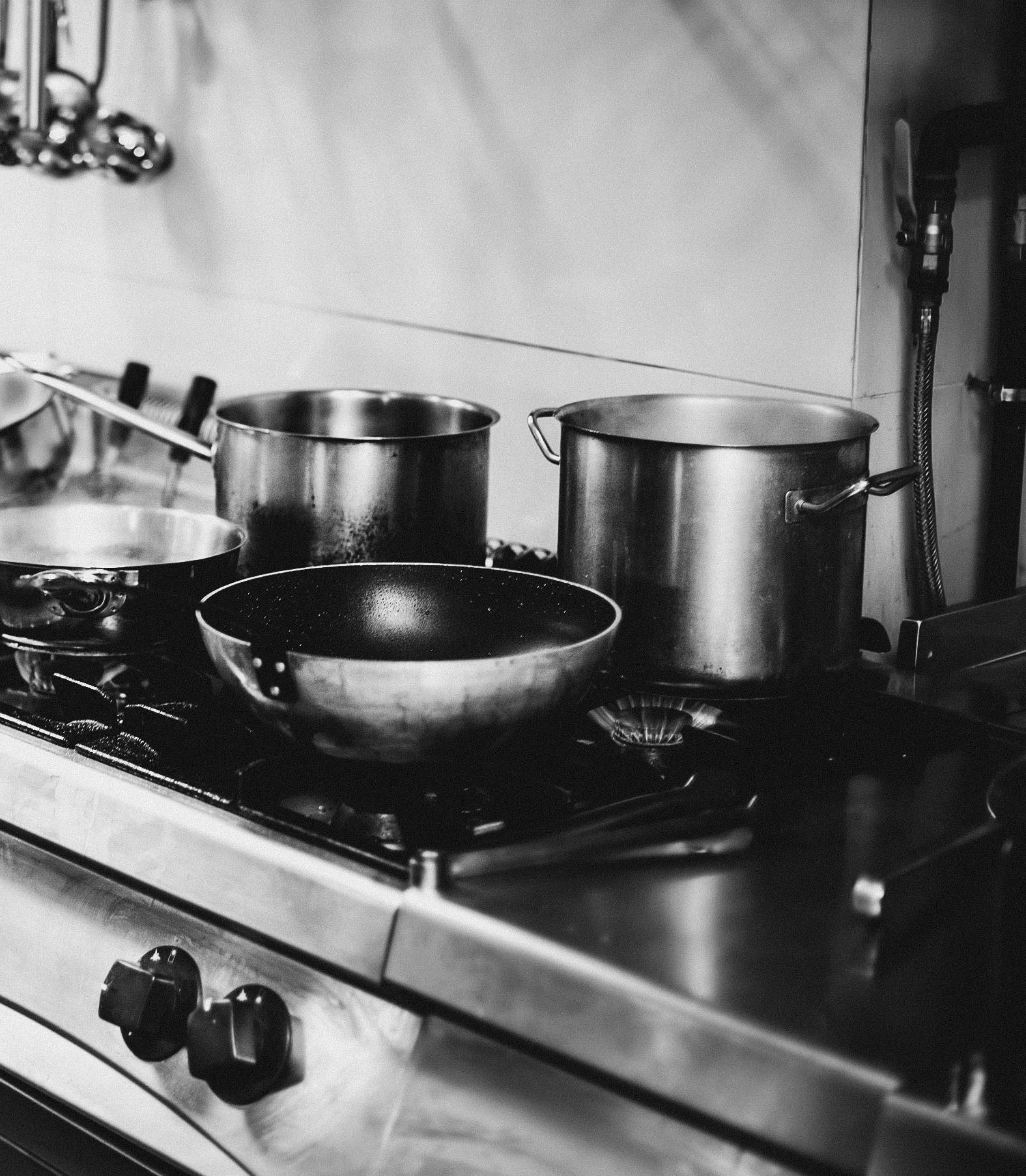
WEARECHEFS .COM 27
Every four years in Germany, they return. Chefs of all ages and nationalities descend upon the country, bearing crisp, white toques and perfectly pressed jackets while quietly, quickly and meticulously slicing, chopping carving and plating. What appear after hours of hard work and toil are some of the most elaborate platters of cold and hot dishes ever seen, putting those iconic images of “The Last Supper” to total shame.
You won't see any baton passing or high dives here, but the “Culinary Olympics” is as heart-pounding a demonstration of sheer skill and artistry as any one might see on the world stage.
The Internationale Kochkunst Ausstellung (IKA) “Culinary Olympics” is one of the oldest, largest and most diverse

international culinary art exhibitions in the world, dating back to 1900 and taking place every four years. Hosted by the German Chefs’ Association, IKA 2020 will take place in Stuttgart, Germany on February 14-19, the 25th edition of the highly anticipated competition.
Roughly 2,000 chefs and pastry chefs from more than 60 nations compete — against themselves and each other — in the week-long competition drawing crowds of fellow chefs and supporters.
The “Culinary Olympics” often fails to get press and attention it should. It’s important to note, therefore, that ACF Culinary Team USA has a lengthy history in the “Culinary Olympics” with teams participating as far back as 1956.

28 NCR | NOVEMBER/DECEMBER 2019 | IKA 2020 |
Previous spread, left to right page from top left: ACF Culinary Team USA 2020: Gerald Ford, CMC, team captain; Paul Kampff, team chef; Geoffrey Lanez, CEC, team chef; Vanessa Marquis, CEC, team chef, Kelsee Newman, CEPC, team pastry chef; Jesus Olmedo, team chef; Will Racin, CEPC, team pastry chef From top: ACF Culinary Team USA 2020; One of the dishes created by the Team for the 2018 Culinary World Cup in Luxembourg
Opposite: Culinary Youth Team USA 2020
In 1960, only six years after American chefs first competed on the world stage, the "U.S. Culinary Team" (as it was then known) captured its first World Championship title at IKA. They returned in 1964 to rack up eight gold medals.
"Many visitors stood around our table and admired our display. 'So big, so American, so rich, so bold... They brought all this in their own jet,'" wrote Culinary Team USA 1964 team member Hubert Schmieder, AAC, in a piece titled "ACF Before the 1970s." "We did not place first, but... We set a style, we made an impact."
Perhaps it was partly that bold confidence that allowed Culinary Team USA to keep up a streak of medal wins throughout the next several decades. The fact that they're the best of the best — with something to prove — didn't hurt either. In 1988, Culinary Team USA would earn the World Championship title in hotfood cooking, establishing a new world record for the most consecutive gold-medal wins.
In 1992, the team broke from European tradition and prepared American food using American techniques, ingredients and style — a torch today's team still carries.
“Our country is a melting pot of various ethnic influences. Our organization is about chefs; it's about culinarians,” says 2020 Culinary Team USA Manager Reimund Pitz, CEC, CCE, AAC, himself an IKA gold medalist many times over. “The Team is a great marketing tool for the American Culinary Federation to share American cuisine with the rest of the world.”
Jesus Olmedo, assistant banquet chef at The Country Club in Chestnut Hill, Ma., chose to apply for ACF Culinary Team USA at the encouragement of mentor and former ACF Culinary Team USA Captain Joseph Leonardi, CMC. Olmedo first led the ACF 2016 Culinary Youth Team as captain before earning a spot on the national team at just 23 years old.
“Chef Leonardi [was] always involved with Olympics and competitions and showed me what’s possible and how much it can progress your career and advance skill levels and professionalism in the kitchen,” Olmedo says. “Being on the youth team helped prepare me for the national team, but it’s still a constant evolution and growth process.”
Indeed, competing in the “Culinary Olympics” involves a true flexing of culinary muscle, with all the necessary experience, expertise, creativity, drive and dedication required to succeed, so

"It is extremely motivating to see chefs that have been cooking their whole lives and continuing their education and improving their technical skills [heading to IKA] ... It gives [us all] something to strive for."
WEARECHEFS .COM 29
- Timothy Bucci, CMC, member of ACF Culinary Team USA 2012
it’s no surprise that many Culinary Team USA participants go on to become true leaders in their field. This year’s team is comprised of six professional chefs — many of whom have certifications and significant competition experience — as well as one alternate. Each team member typically puts in hours of his or her own time to research and test recipes, and
that’s not even mentioning the hours of travel and practice together in the kitchen. Oh, and everyone still has fulltime jobs to maintain.
“The Culinary Olympics really is a huge investment of time and energy and a big commitment, but it’s worth it for our professional development and our careers,” says Gerald Ford, CMC, executive chef at The Ford Plantation in Richmond Hill, Ga., and 2020 ACF Culinary Team USA captain.
All of the work and success doesn’t come without a tremendous outpouring of support, however, Ford notes. Through ACF, Culinary Team USA participants receive the support of full-time managers and a long roster of advisors and mentors, many of whom have competed in multiple IKAs.
“We have a very young team with almost no international competing experience,” says Pitz. “We took advantage of advisers like Keith Keogh, Ferdinand Metz and Steve Jilleba — they've been at our practices helping us out.”
Teams are also assigned qualified sous chefs for assistance during practice and competition, and they receive sponsorship and donations in order to fund travel for practice. Many industry companies donate ingredients for the chefs to use during practice and competition; it’s a big help, as Ford notes that the cold platter alone can cost up to $15,000 to produce.

As each member has jobs and lives in different parts of the country, the team travels as often as once a month to Florida to cook together and review individual research and refinement they have all performed on their own time.
As one can imagine, competition is fierce, with ACF Culinary Team USA going up against more teams from around the world than ever before, many

30 NCR | NOVEMBER/DECEMBER 2019 | IKA 2020 |
From top: Culinary Team USA 1980; Culinary Team USA 1986
Opposite: Some of the dishes created by the Team for the 2018 Culinary World Cup in Luxembourg
of which have participants who are able to make competing their full-time job. “[American] country clubs and hotels are no longer willing to free up their chefs for such long periods of time for practices,” Pitz says.
Culinary Team USA also faces understood pressure due to previous performance. At IKA 2016, held in October in Erfurt, Germany, ACF Culinary Team USA ranked fourth in the world overall and earned the top score and overall gold medal in culinary art in the cold food competition. ACF Culinary Youth Team, comprised of chefs 25 years or younger, placed seventh out of 19 competing countries, while the ACF U.S. military team won four gold medals and two bronze medals.
To ensure success at next year’s IKA, Ford says he’s learning from some of the pitfalls and mistakes at the Culinary World Cup held in Luxembourg last year — mostly working on coordination and organization in the kitchen. He’s focused on streamlining the various cooking processes in order to enhance efficiencies in the kitchen.
This streamlining is important this year, especially as the format for IKA 2020 has changed. Since the very
first edition of the IKA in 1900, the exhibition of cold platters has always been one of the major attractions of the event. Starting in 2020, the exhibition of cold platters will now be replaced by a Chef’s Table.
“The new category is for 12 people. We do two hot hors d'oeuvres, two cold hors d'oeuvres, two spreads that go along with a bread, we're doing a salad, a seafood platter, and we're doing four different types of petit fours,” says Pitz. “It must be 100% edible, and team captains must explain each item on that platter.”

This change was not made lightly. “The waste of food is an important issue. This is something we want to actively reduce,” explains Hans-Peter Tuschla, Vice President of the German Chefs’ Association. In addition, the organization hopes to increase transparency during the preparation phase. “The entire cooking process for the Chef’s Table takes place in the cooking boxes under supervision of the jury and the inquisitive glances of the guests — which is quite unlike the cold platters which the teams used to bring to the competition already plated.” The hot food portion of the event, including Restaurant of the Nations and Live Carving, will remain the same and test teams to produce a multi-course restaurant and banquet

WEARECHEFS .COM 31
meal demonstrating the highest levels of precision and creativity.
“We will be the first U.S. team in history that will produce two categories that are both edible,” says Pitz. “That is a tremendous honor and a tremendous challenge.”
winners, but there could be multiple gold-medal winners.
“Essentially, we are competing against ourselves first, and then we can be ranked among other teams,” says Ford. “You could have a score of 97.2 and win a gold medal, and another team could have a 97.2 score, which might also earn a gold medal, but the team with the highest overall score wins the top honors.”
As one would imagine, brainstorming and collaboration begin as soon as the team comes together. In 1977, NCR, (then called Culinary Review) published recipes from that year’s competition, featuring dishes like Breast of Chicken Neptune with oysters, spinach and bacon; Roquefort cream dressing; fondue Neuchateloise; sea scallops en brochette “Hawaiian” with sweet and sour sauce, and fillet of walleye pike “Veronique” with classic fish velouté.
ven though the teams march in to music with their flags held high (ACF Culinary Team USA has chosen Bruce Springsteen's "Born in the USA"), it's important to note, Ford says, that judging for the “Culinary Olympics” differs from the sports version. Whereas sport Olympic athletes directly compete against each other for only one gold, silver and bronze medal in each category, in the culinary version, the different medals are awarded to teams for their individual scores on a 100-point ranking. At the end of the competition, those scores are combined to determine the overall
EToday’s team still eschews the heavily French-influenced menus of “Culinary Olympics” of the past; since that fateful 1992 IKA, the team has rarely wavered from using decidedly American ingredients and dishes. The dishes are still being finalized, so Ford offered only a general description.

“We have been spending hours look at classic, regional American dishes, like chowder or even Apple pie, and figuring out how to showcase American ingredients, but in a very refined manner,” he says. “We are not going to use Gruyere because cheddar is more widely produced in this country. We don’t want to look like we’re from another country or trying to ‘fit in.’ We want to showcase a menu that you wouldn’t find anywhere but in America.”
ACF Culinary Team USA followed this theme at last year’s World Cup, where they served seared American sturgeon and Alaskan King crab

32 NCR | NOVEMBER/DECEMBER 2019 | IKA 2020 |
mousseline; organic duck breast wrapped in a savory crumble crust with duck-cherry sauce; autumn potato sponge cake filled with duck leg ragout; braised foraged root vegetables and orange hazelnut crumble for dessert — to name a few.
Fundamentals and precision lay at the heart of Culinary Team USA’s efforts. “We’re really trying to produce the most ideal version of something,” says Ford. “If we are working on roasting a piece of meat, we need to determine what is the ideal way to roast, slice and serve this particular meat? We do a lot of research on our own and will put the food in front of our advisors, who are some of the most incredibly experienced chefs in this country, for guidance.”
Aside from those strong skill sets and experience, Ford notes another strength of his team members: a passion for the work.
“The R&D process is really grueling and time-consuming process, so you really have to love it,” Olmedo says. “For me, I’m always trying to improve myself and learn different techniques, so being involved with this group of chefs has been life-changing. Already, I have learned great leadership skills and have really pushed myself to go above and beyond and help set new trends in the food industry while sticking to the fundamentals of good cooking. I am excited to see what I become after this experience.”
To read more about ACF Culinary Team USA, visit acfchefs.org/team.
ACF Culinary Team USA 2020
Gerald Ford, CMC, team captain Executive chef at the Ford Plantation in Richmond Hill, Georgia
Paul Kampff, team chef Executive chef at St. Louis Country Club, St. Louis, Missouri
Geoffrey Lanez, CEC, team chef Executive chef of The Patterson Club in Fairfield, Connecticut and CEO/owner of Burrd Productions


Vanessa Marquis, CEC, team chef Executive chef of The Silo and Core Catering in Tampa, Florida
Kelsee Newman, CEPC, team pastry chef Pastry arts instructor at Sullivan University in Louisville, Kentucky

Jesus Olmedo, team chef Assistant banquet chef at The Country Club in Chestnut Hill, Massachusetts
Will Racin, CEPC, team pastry chef Pastry chef at The Duquesne Club in Pittsburgh, Pennsylvania
Culinary Youth Team
The junior culinary team at Johnson County Community College, Overland Park, Kansas, will compete in Stuttgart as ACF Culinary Youth Team USA 2020. Team members are: Elijah Luck, CSC, captain, Melissa Dodd, Torian Jenkins, Charlotte McCale, CFC, Ellianna Pageler, Bailey Sargent, Madison Woods; coached by Edward Adel, CEC, culinary instructor. More.
Regional Team
Stephen Bush, CEC
Heather Heneghan
Robert Marilla, CEC
Joe Peroney
Colin Purtell
Carla Skornik
Heather Therien
Eric Yeager, CEC
Team Management
Reimund Pitz, CEC, CCE, AAC – Manager
Kevin Storm, CEC, AAC – Assistant Manager
Raimund Hofmeister, CMC, AAC –
Assistant Manager, Regional Team
Rene Marquis, CEC, CCE, CCA, AAC –
Business Manager
Gunther Heiland, CMPC, AAC - Pastry
Coaches
John Coletta, CEC, AAC
Sous Chefs
Kevin Maier
Kevin Storm
Marc Ty Advisors
Geoffrey Blanchette, Logistics
Joachim Buchner, CMC
R. Andrew Chlebana II, CEPC, CCA – Pastry Advisor
Bert Cutino, CEC, AAC – Financial
John Folse, CEC, AAC
Gunther Heiland, CMPC, AAC – Pastry
Keith Keogh, CEC, AAC
Joseph Hardiman, Logistics
Heinz Hofmann, HAAC – Financial
Thomas Macrina, CEC, CCA, AAC –
Foundation Chair
Lawrence McFadden, CMC
Louis Perrotte, CEC, AAC – Junior Team
Lucien Salama, HAAC – Apparel
Harold Small, HBOT, HAAC – Financial
Michael Thrash, CEC, CCA, Logistics
David Turcotte, CEC, AAC – Military Liaison
WEARECHEFS .COM 33
A HANKERING FOR HEALTHIER
When reimagining traditional dishes to make them healthier and still craveable, consider the three “F”s of successful concept development: flavorful, familiar and fulfilling. Flavor is foremost, hands down. Without sufficient flavor, a healthy dish—no matter how alluring visually— will fall flat with customers. And, when a dish “made better for you” is additionally “fascinating” (interesting) or “fun” (engaging or interactive), that’s even more cause for celebration all around.
NPD Group’s National Eating Trends® Health & Wellness Service shows about a quarter of adults are trying to maintain or elevate their health through their food choices. “This signals a dramatic shift from decades ago when the typical U.S. consumer was more reactionary when it came to health needs and typically changed behaviors after an illness threatened the individual’s well-being,” says food/beverage-industry analyst Darren Seifer.
GREAT GRAINS
Indeed, more Americans are gravitating toward a daily or flexible eating lifestyle that focuses on vegetables,
fruits, whole grains and legumes as the foundation of dishes. That’s good news for chefs who, as a matter of conscience, strive to make dishes healthier.

For example, a customer focusing on trends recently asked Coleen Donnelly, a San Francisco-based R&D chef specializing in “better for you” menu concepts for K-12 and college/university foodservice, to create a grab ‘n’ go item featuring pork and whole grains. Her mind immediately went to spinning the classic Cuban sandwich.
Donnelly wanted to boost flavor and texture, so she developed a cabbage and pickle relish incorporating cooked, whole and “intact” grains — grains that have not been broken down into bran, germ and endosperm — like Khorasan bulgur, buckwheat groats and red rice as well as brown flax seed. The relish is layered on bread with marinated, slowroasted pork, ham, Swiss cheese and a Dijon-mayo spread.
“When the sandwich comes out of the panini grill, the result is a creamy, salty, crunchy/chewy twist on a popular favorite” that’s transformed into a healthier menu offering, she says.
34 NCR | NOVEMBER/DECEMBER 2019 | Health |
More American adults are actively seek out “better for you” dishes. For chefs, that’s an opportunity to gratify their guests’ changing needs and earn repeat business.
//
By Brent T. Frei
PLANT-FORWARD FOOD
Although vegetarians and vegans are certainly contributing to the growth in plant-based foods, they represent only singledigit percentages of the U.S. population and aren’t the primary contributors. A larger segment of the overall adult population, 18 percent, are simply trying to incorporate more plant-based foods into their diets according to NPD’s Health Aspirations and Behavioral Tracker. The popularity of plant-based foods is being fueled by desire among U.S. adults (60 percent) for more nutrients in their diets as well as by concerns for animal welfare and how meat products are brought to market.
Throughout history and continuing today in many cultures, meat has served as a flavoring agent rather than a center-of-the-plate item, akin to a condiment or garnish. Adopting this concept not only nods to a bona-fide trend influencing American foodways, but can increase perceived value of a dish. What’s more, building plate coverage with less-costly seasonal produce and fish can contribute to a healthier P&L.
Take gumbo, the official dish of Louisiana. While not “unhealthy,” per se, for diners eschewing traditional meat or shellfish, gumbo can easily be made vegetarian by using tofu, as does Joe Muench, co-owner and executive chef of Maxie’s in Milwaukee. “It’s a bit lighter because it’s missing the animal fat but the flavors are still there,” he says.
The subtle flavor of pressed soybean-milk curd not only can vary in mouthfeel from soft to extra firm, tofu absorbs flavors well (Muench smokes the tofu in his gumbo), making it an excellent meat substitute. Additionally, tofu is low in calories and high in plant protein and iron.
“I resent when I go out to dinner and they try to sell me the healthy food for the same price as the good food,” stand-up comedian Jim Gaffigan once said. Times have changed. These days, “better for you” equals “value added” for which an increasing number of Americans are willing to pay — and return for more.
Above: Tofu is an ideal substitute for meat in classic favorites because soy is a quality plant-based protein that offers 7 to 15 grams protein per serving. This spicy gumbo features extra-firm tofu, soy sausage and toasted soy nuts.

Left: Hearty and satisfying baked beans, such as this barbecue side dish from Renee Zonka, RD, CEC, CHE, need not rely on animal fat to taste delicious. Plus, beans are a naturally good source of meatless protein and dietary fiber.

WEARECHEFS .COM 35
Brent T. Frei is principal of Frei & Associates, Schaumburg, Illinois.
VIM AND VINEGAR
Some ideas for boosting the flavor of a "lighter-side" menu — without losing the "light"
by Brent T. Frei
• Herbs, herbs, herbs … and bulbs. Fresh basil, dill, mint, cilantro … you name it. Using the right amounts and combinations, plus peppery lettuces like arugula and radicchio and aromatic bulbs like onion, garlic and fennel go a long way in delivering satisfaction without the salt.
• Go local. Sourcing ingredients grown or harvested nearby or within a reasonable distance capitalizes on seasonality and freshness, when foods are at their flavor peak.
• Pump up umami. Umami creates a sensation of fullness in the mouth, reducing the need for salt. Think meats and fatty fish in small amounts, full-fat cheeses used sparingly, mushrooms, tomatoes, soy-based foods (including soy sauce) and the like.
• Say it with citrus. Orange, tangerine, grapefruit, lemon, lime… Just a little acidity from such fruits adds contrastingly bright tang or tartness (with additional sweetness in most cases), rounding out the flavor experience.

• Grill, baby, grill. Grilling vegetables and fruits allows natural sugars to caramelize, delivering a tantalizing smoky/sweet flavor with less fat and sodium.
• EVOO and vinegars. Unlike animal-derived fats such as butter, lard and shortening, nutrition experts believe olive oil is healthier because it’s monounsaturated. Adding the tangy acidity of aged balsamic, sherry, apple and other flavor-packed vinegars can make a dish sing.


• Be mindful of mouthfeel. According to Mintel, consumers worldwide seek out foods that deliver more than one texture experience because the disparity makes food more interesting. This same demand by guests can translate to contrasting temperatures in a dish when practical.
• Chiles! The heat — from mild to wild — and natural spice of chile peppers adds boldness to dishes, which translates to less reliance on salt and fat. Hot sauces, of which a vast variety exists, do the same thing, but be sure to check labels for sodium content.

36 NCR | NOVEMBER/DECEMBER 2019 | Health |



HI-TECH OR HIGH TOUCH?
// By Samantha Lande
Technology has infiltrated almost every aspect of life, from the way we consume news to the way we pay for parking, so it’s only natural that it has started to change the way we dine out. Innovations like mobile ordering, kiosks, digital signage and third-party delivery have revolutionized the fast-casual sector, but the question remains, will technology move into the fine dining space at the same rapid clip?
“Moving forward we will see a lot more of integration of tech in all areas of the restaurant industry, but I believe the last point of contact will still be face-toface in fine dining,” according to Erik Thoresen, former principal at Technomic and industry consultant.
Fast casual restaurants don’t require as much “human touch,” so mobile and kiosk ordering make sense, but in fine dining, personalized hospitality and service are an important part of the overall experience. In terms of back of house, it’s a mixed bag when it comes to who’s adopting which technologies. Some restaurants are returning to their “roots,” utilizing more basic techniques to cook food, while others are wholeheartedly embracing technology,
and in many instances, becoming the first to experiment with fancy equipment before it goes mainstream. Time will certainly tell when it comes to how fine-dining will embrace — or not embrace — certain technologies, but in the meantime, here are some ways chefs are using them in their restaurants.
COOKING APPLICATIONS

In many ways, fine dining restaurants have been the ones to really try out if a technology will work in a restaurant setting or not. The sous vide machine, now much more commonplace in both casual restaurants and home kitchens, has been used in commercial kitchens for over a decade, and was the inspiration for a cookbook written by Thomas Keller in 2008.

However, some chefs are moving back towards more traditional cooking processes. David and Anna Posey, chef-owners of Elske in Chicago, see the benefit of certain
technologies, but prefer a simpler equipment setup for their smaller kitchen. “The sous vide systems are becoming slimmer and cheaper and smarter, but we don't feel we need to cook our meat in a bag; we would rather cook it in our hearth oven,” says Anna Posey, who feels that wood-fired cooking does a better job enhancing the taste and texture of their dishes.

38 NCR | NOVEMBER/DECEMBER 2019 | Management |
As technology continues full steam ahead in hospitality, the question remains as to how it will or won't impact fine dining
UNIQUE APPROACHES
Other restaurants are all-in on technology, finding themselves early adopters in many ways. Take One65 in San Francisco, for example. In order to transfer food and ensure top notch service for its four different concepts spanning a six-story building. dumbwaiters were installed to connect its patisserie, bistro and bar, and fine-dining restaurant on the top floors.
“We tested the functionality of the system prior to opening to determine if it was effective in transferring food to our presentation standards by filling a glass of water to the top, and not a single drop of water was displaced during the transfer process from floor to floor,” says General Manager Olivier de Roany. “The dumbwaiters enable us to serve top-quality food almost instantly, assisting us in our primary goal of providing the highest level of seamless service to our guests.”
Other restaurants have utilized iPads for wine lists, allowing customers and servers to take a deeper dive into the various wine regions of the bottles, and Prime Steak Concepts, operator of the Steak44, Steak48 and Ocean44 brands, recently announced it will begin accepting payments via WeChat, a popular way to communicate and pay in China.



FRONT OF HOUSE BENEFITS

Perhaps where technology has already benefited fine dining the most is with front of house reservation, event planning and Customer Relationship Management (CRM) systems. With the emergence of platforms like Tock, restaurants can get an even more accurate count of diners because they prepay for meals. The system can also be used to generate tickets for events like wine dinners or charity functions. In addition, restaurants can use these software platforms to gather better data on their customers and store dining preferences in order to offer more customized experiences.
“From social media, to reservation systems and storing diners' information, ‘front of house’ technology has been the most useful for us,” says Posey of Elske.
Thoresen thinks we will continue to see front of house innovations with the rise in AI. “One day, it won’t be uncommon for a machine to text and ask a few questions about dining preferences, whether you like red or white wine or have an allergy, in an effort to continue to personalize and enhance the face-to-face experience,” he says.
Technology is tricky — you can’t always predict what the next innovation will be, and it’s often disruptive and game changing to say the least. While certain technologies like mobile ordering have resonated with consumers, the restaurant industry and fine-dining segment continue to wait and see what’s next.



WEARECHEFS .COM 39
“Moving forward we will see a lot more of integration of tech in all areas of the restaurant industry, but I believe the last point of contact will still be face-to-face in fine dining”
Samantha Lande is a freelance writer based in Chicago. Her work has appeared in Food Network, Chowhound, Time Out and other local and national publications.
ADD US TO YOUR QUEUE
With ACF Conference On-Demand, learn from some of the biggest names in the industry, wherever you are. Chefs like Bryan Voltaggio, Duff Goldman, Elle Simone Scott and JJ Johnson share recipes, demonstrations and more—direct from our main stage to your laptop. Visit acfchefs.org/olc today!

The American Culinary Federation is hosting ChefConnect: Seattle and ChefConnect: Nashville, two can’t-miss events where chefs can explore new ideas and flavors, share ideas with fellow culinarians, and stay up to date on the latest in food trends and technology. Early registration ends soon!


Register today at acfchefs.org/events
November 20 NASHVILLE Early Registration Ends


March 1-3

March 22-24


December 13

INSPIRATION
Early
SEATTLE
Registration Ends
TWO GREAT CITIES
DoubleTree by Hilton Hotel Seattle Airport
March 1–3, 2020
LUDO LEFEBVRE
Ludo Lefebvre is one of the most influential chefs in Los Angeles dining, revolutionizing the culinary industry. After training in France for 12 years, Lefebvre came to Los Angeles and was soon awarded the prestigious Mobil Travel Guide Five Star Award for L’Orangerie in 1999 and 2000 and Bastide in 2006. In 2013 Lefebvre opened Trois Mec, twice named “L.A.'s Best Restaurant” by LA Weekly. In addition, he has been credited with igniting the phenomenon of the pop‐up restaurant and establishing its viability as a business model.
Lefebvre has been named one of the “World’s 50 Greatest Chefs” by Relais & Chateaux and was a James Beard Award finalist for a “Rising Star Chef,” “Best Chef West” and “Best Culinary Program” for his hosting of PBS’s “Mind of a Chef.”
JONATHAN WAXMAN
Jonathan Waxman is a native Californian whose family taught him an appreciation for food arts from an early age.
Today, Waxman is chef and owner of Barbuto in Manhattan's West Village and Jams in 1 Hotel Central Park. In 2014, he opened his Nashville restaurant, Adele’s, and is a founding partner of Nashville’s Music City Food + Wine Festival. He is the 2016 James Beard Award winner for “Best Chef, New York City."
Visit
acfchefs.org/events to register now!
TWO CAN'T MISS EVENTS
Sheraton Music City Hotel March 22-24, 2020
WILO BENET
Wilo Benet began his career as an apprentice to chefs from Austria, Germany, Switzerland, India at the Hotel Caribe Hilton in San Juan, Puerto Rico. After graduating from the Culinary Institute of America, Benet gained experience at institutions such as Le Bernardin Restaurant in New York and at the mansion of the governor of Puerto Rico.
Wilo just opened his newest concept, Wilo Eatery & Bar in Puerto Rico, which features a casual chic restaurant, bar and “Grab and Go” store, with four outlets.
After Hurricane Maria in 2017, Benet became part of Jose Andres’ and World Central Kitchens team, “Chefs for Puerto Rico,” which fed more than 2.5 million people.
SEAN BROCK
For 12 years, Sean Brock was the chef/partner of McCrady’s in Charleston, South Carolina. Sean is also the founding chef of Husk Restaurants, located throughout the Southeast. Brock will soon open his first solo venture, a restaurant compound in East Nashville, TN.
In 2010, Brock won the James Beard Award for Best Chef, Southeast, and is a four-time finalist for Outstanding Chef, as well as a three-time finalist for Rising Star Chef. Brock hosted season 2 of the Emmy Award-winning television show “Mind of a Chef,” produced by Anthony Bourdain. He is currently featured on the popular Netflix show “Chef’s Table” and will release the highly anticipated follow up to his first cookbook this fall.
JUSTIN SUTHERLAND
Growing up in Saint Paul, MN, Justin Sutherland spent his childhood in the kitchen watching his mother and grandmother cook, as well as his favorite TV show, “Yan Can Cook.” For his fifth birthday, Sutherland asked for and received an Easy Bake Oven. All of these things together, inspired him to pursue his passion and develop his career, centered on food and family.
Sutherland has appeared on “Iron Chef America” and season 16 of Bravo’s “Top Chef.” He is managing partner of Madison Restaurant Group and culinary consultant for Allianz Field soccer stadium.
NCR Quiz
November/December 2019
By LeeAnn Corrao
What is Tock?
a. A new timer system for ovens
b. A reservation management system
c. A social media platform
d. A cookbook about culinary technology
What was the historical antecedent for punch?
a. Syllabub
b. Cider
c. Sangaree
d. G rog
What does Patrick Williams say is the key to creating shareable cocktails?
a. To decide on the base and focus on balancing sweetness
b. Using farm fresh fruits and herbs
c. Selecting the right vessel to contain it
d. Paying attention to dilution when serving
How has the format for the 2020 Culinary Olympics changed?
a. The cold food displays will be tasted
b. The cold food display will be five courses
c. The point system has changed
d. The format has not changed
In what year did ACF Culinary Team USA becomes the first nation to win the World Cup three consecutive times?
e. 1984
f. 1990
g. 1994
h. 2002
What percent of surveyed consumers said they prefer foods cooked with lots of spices?

a. 10%
b. 22%
c. 38%
d . 44%
When did punch bowls start to become a party staple?

a. 18th century
b. 19th century
c. 20th century
d. 21st century
There can be multiple gold-medal winners for a single IKA competition.
a. Tr ue
b. Fa lse
The main ingredient of coquilles St. Jacques is
a. Clams
b. Scallops
c. Crab
d. O ysters
Which of the following was not cited as an upcoming dessert trend?


a. Fewer garnishes
b. Hispanic flavors
c. Vibrant colors
d. Frozen treats
Roughly how many chefs compete in the Culinary Olympics?
a. 1,000
b. 1,500
c. 2,000
d. 2,500
See the rest of the questions, finish the quiz and earn 4 CEHs toward your certification on ACF’s new
44 NCR | NOVEMBER/DECEMBER 2019 | Quiz |
Online Learning Center
at acfchefs.org/olc.
195 COUNTRIES. 25 LANGUAGES. OVER 150 YEARS.




Since the first bottle of TABASCO ® brand Original Red Sauce was handcrafted in 1868, it has been the pepper sauce loved by people around the world. From our home on Avery Island, Louisiana, to every corner of the globe, it’s the bold choice for flavor enthusiasts looking to make their meals as unique as they are.

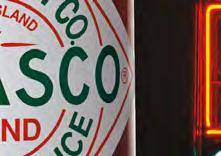
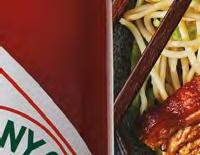






TABASCOfoodservice.com



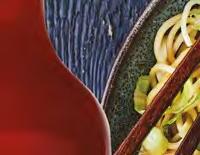










TABASCO® Sauce is distributed to 195 countries and territories around the world and labeled in 25 languages and dialects. ©2019. TABASCO and the DIAMOND and BOTTLE LOGOS are trademarks of McIlhenny Company, Avery Island, Louisiana, USA 70513.
Slow Start, Lasting Legacy
By Heather Henderson
The idea of creating an honor society within the ACF was first brought up in 1948. But the American Academy of Chefs (AAC) wasn’t officially founded until 1955 after a drawn-out debate among ACF leadership and several false starts — including a bill that was sent to Congress in 1954 and never made it any further.

The 1955 National Convention in Pittsburgh was a turning point for both the AAC and the ACF. That week, the ACF’s sub-groups were, for the first time, consolidated into a single national body with separate chapters. With this big move, it was finally the right time to establish the Academy as well, and it was voted into existence by delegates at the convention.

Peter Berrini AAC, HOF, was elected the first chairman and given the responsibility of organizing the group.
By the time Berrini left his post to become ACF National President in 1959, there were 37 members of the Academy. Those early members had to meet stringent criteria to be inducted, which was then called the National Academy of Chefs. In order to be nominated for the Academy at that time, each chef had to be an active member of the ACF and had to have been working as a chef for at least 15 years. (Today, the requirements are even stricter, including conference attendance, ACF Certification and the recommendation of at least two active Academy fellows.)
2020 will mark the Academy’s 65th anniversary, and its mission has remained largely the same since that momentous convention in 1955: to represent the highest standards of professionalism in the ACF, society and industry, and to promote the education of all culinarians.
"The fellows for the past 65 years continue to uphold the mission of the Academy,” says Chairman Americo DiFronzo, CEC, CCA, AAC. “[We will continue] working to share our knowledge to help educate our next generation of chefs, awarding culinary scholarships, and to honor chefs who give back to our industry.”
46 NCR | NOVEMBER/DECEMBER 2019 | A Look Back |
On the eve of its 65th aniversary, we look at how the American Academy of Chefs became an integral part of the ACF

www.kitchenaidcommercial.com | commercial@kitchenaid.com ®/TM ©2019 KitchenAid. All rights reserved. QUIETLY, POWER YOUR WAY TO A PERFECT BLEND The new KitchenAid® Commercial Enclosure Blender delivers quiet performance for your toughest recipes anywhere, minimizing disruption, for professional results every time.

Learn beekeeping and more with ACF’s Online Learning Center! Get started at acfchefs.org/olc. I know how to keep bees, do you?




































































































































































































































































































 By Amelia Levin
By Amelia Levin

















































































